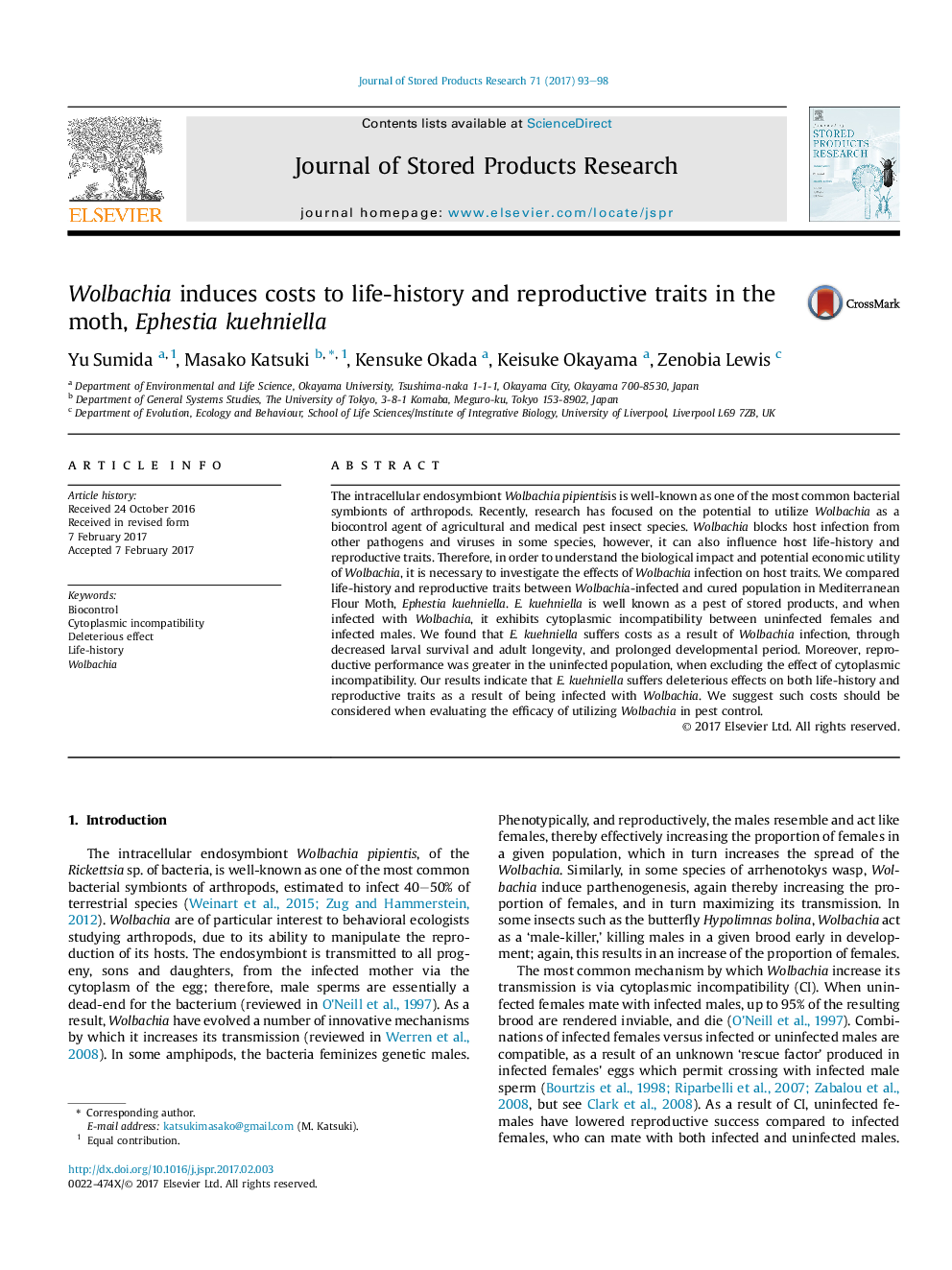| Article ID | Journal | Published Year | Pages | File Type |
|---|---|---|---|---|
| 5762591 | Journal of Stored Products Research | 2017 | 6 Pages |
Abstract
The intracellular endosymbiont Wolbachia pipientisis is well-known as one of the most common bacterial symbionts of arthropods. Recently, research has focused on the potential to utilize Wolbachia as a biocontrol agent of agricultural and medical pest insect species. Wolbachia blocks host infection from other pathogens and viruses in some species, however, it can also influence host life-history and reproductive traits. Therefore, in order to understand the biological impact and potential economic utility of Wolbachia, it is necessary to investigate the effects of Wolbachia infection on host traits. We compared life-history and reproductive traits between Wolbachia-infected and cured population in Mediterranean Flour Moth, Ephestia kuehniella. E. kuehniella is well known as a pest of stored products, and when infected with Wolbachia, it exhibits cytoplasmic incompatibility between uninfected females and infected males. We found that E. kuehniella suffers costs as a result of Wolbachia infection, through decreased larval survival and adult longevity, and prolonged developmental period. Moreover, reproductive performance was greater in the uninfected population, when excluding the effect of cytoplasmic incompatibility. Our results indicate that E. kuehniella suffers deleterious effects on both life-history and reproductive traits as a result of being infected with Wolbachia. We suggest such costs should be considered when evaluating the efficacy of utilizing Wolbachia in pest control.
Related Topics
Life Sciences
Agricultural and Biological Sciences
Agronomy and Crop Science
Authors
Yu Sumida, Masako Katsuki, Kensuke Okada, Keisuke Okayama, Zenobia Lewis,
